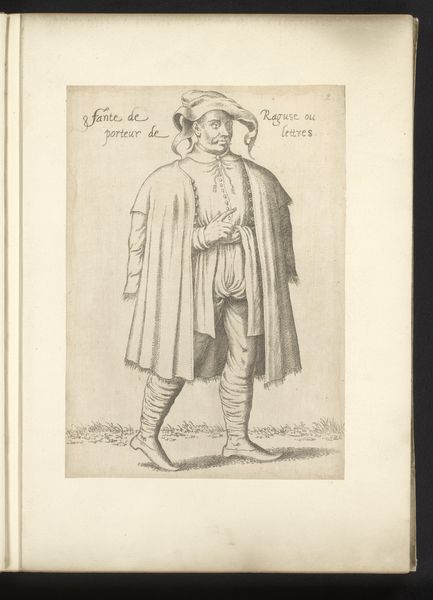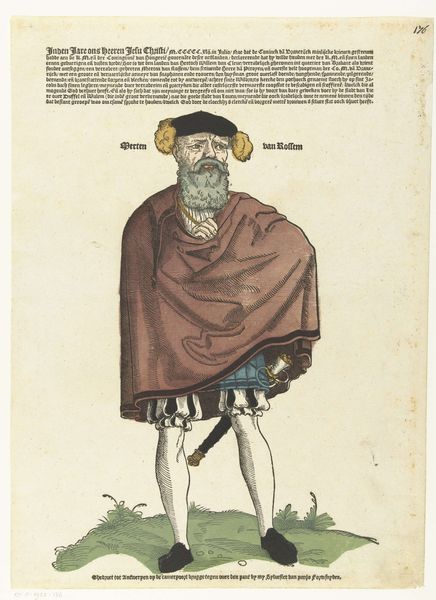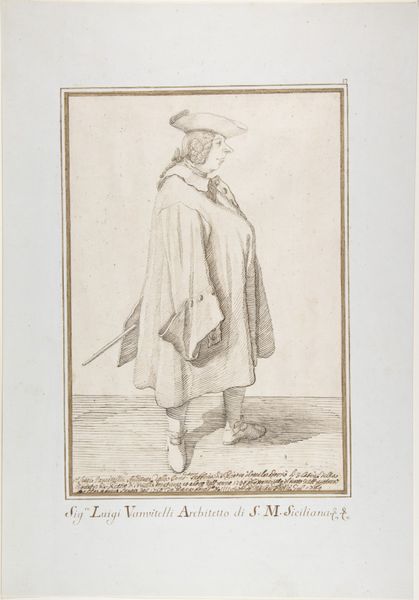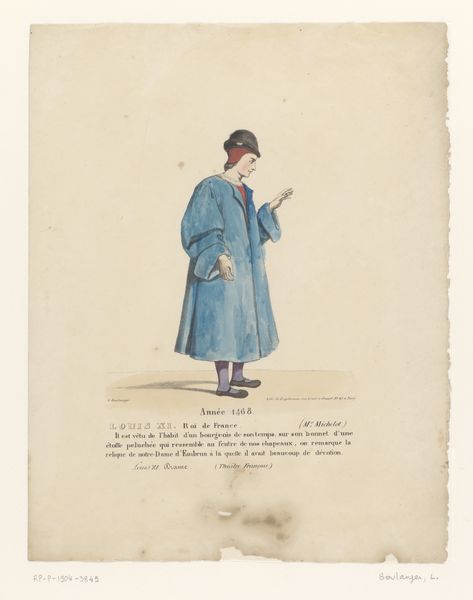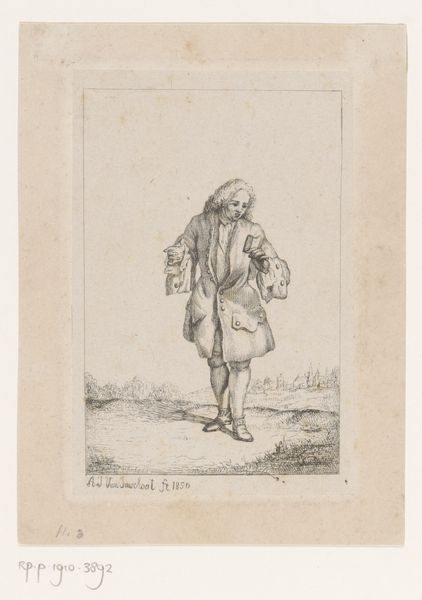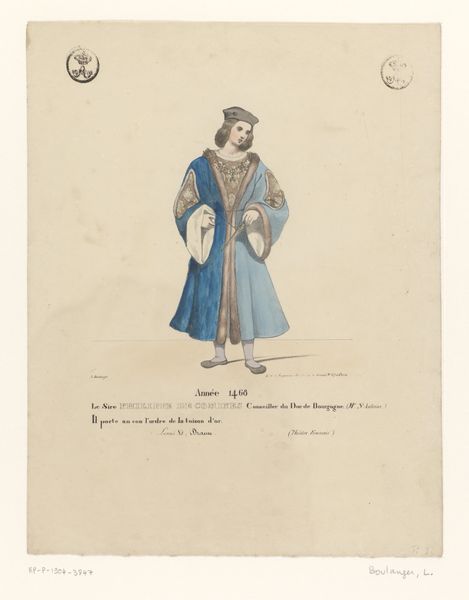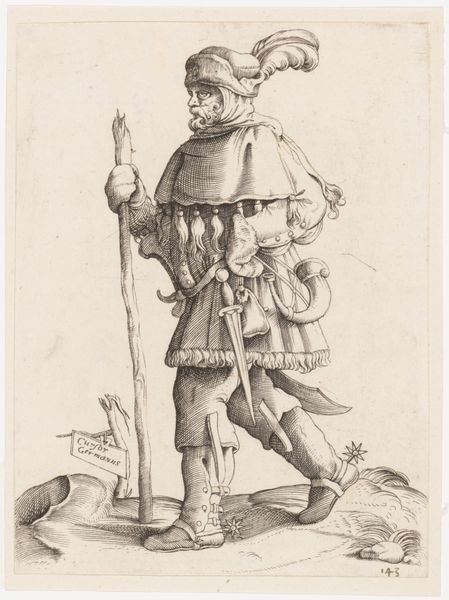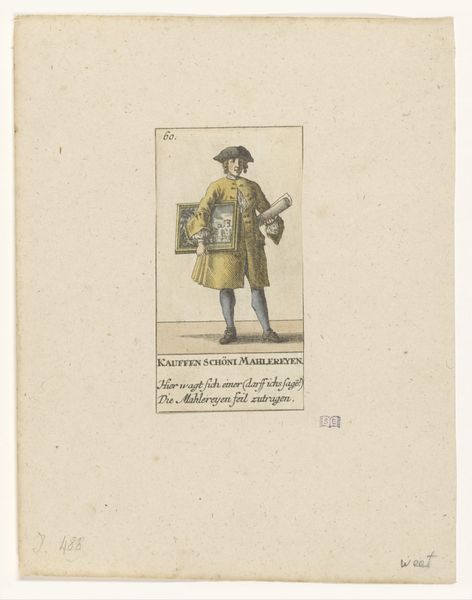
print, engraving
#
portrait
# print
#
figuration
#
11_renaissance
#
genre-painting
#
northern-renaissance
#
academic-art
#
engraving
Dimensions: height 235 mm, width 167 mm
Copyright: Rijks Museum: Open Domain
Jost Amman made this hand-colored woodcut, “Standing Man in Dutch Dress,” sometime in the late 16th century. It depicts a well-to-do man from Holland, or the Netherlands. Amman worked in Nuremberg, a major center of the print trade. He made numerous illustrations for books showcasing regional costumes of Europe. This print would have appealed to those interested in ethnography, fashion, or simply the novelty of seeing how people dressed in other lands. The man’s clothing reflects his status and the fashions of the time. Note the expensive fabrics, the tailored fit, and the fashionable accessories. The Netherlands was a prosperous region at this time, due to its extensive trade networks and emerging capitalist economy. The print reflects that prosperity, but it also subtly reinforces social hierarchies. By documenting and categorizing people by their clothing, prints like this helped to solidify ideas about national identity and social class. Analyzing prints like this requires us to consider not just the image itself, but also the social and economic context in which it was made and consumed. Researching the history of costume books and the print trade can reveal much about the cultural values of the period.
Comments
No comments
Be the first to comment and join the conversation on the ultimate creative platform.

